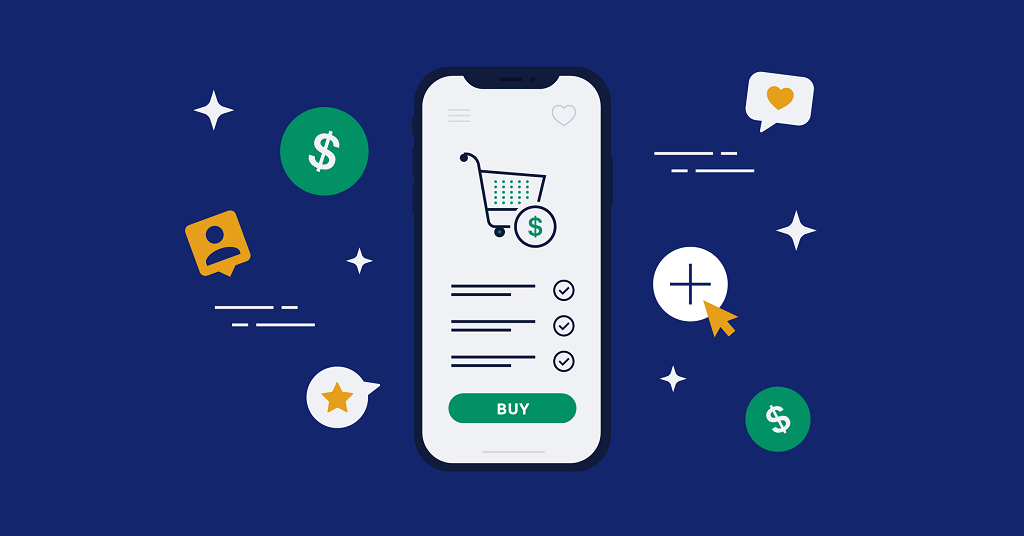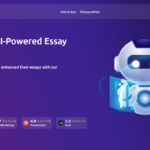Ecommerce applications are essential tools in today’s fast-paced digital market for companies trying to reach a wider audience, increase sales, and interact with clients directly through mobile devices. Developing an e-commerce application presents a chance to enhance client pleasure, establish a smooth buying experience, and profit from the swiftly expanding mobile commerce sector. To ensure scalability, usability, and marketability, designing a successful e-commerce app necessitates meticulous planning that combines technical and marketing techniques.
This article will walk you through the key technological and marketing factors that you need to take into account when you build your own ecommerce app. By the time it’s through, you’ll have a thorough understanding of how to make an app that works well and succeeds in the cutthroat internet market.
Part 1: Technical Considerations
Platform Selection: Native vs. Cross-Platform
One of the first considerations you’ll have to make is whether to develop a native or cross-platform program. The choice has an impact on your development process, user experience, and upkeep.
- Native apps are created particularly for one platform, such as Android or iOS. Native programming provides the highest performance and access to device-specific capabilities, but it necessitates distinct codebases for each platform, which extends development time and expenses.
- Cross-platform apps are created utilizing frameworks such as Flutter or React Native, which enable a single codebase to operate on both Android and iOS. This strategy saves time and money, but it may compromise performance and device-specific functionality as compared to native apps.
Choosing the Right Tech Stack
Choosing the right technology stack is crucial to your ecommerce app’s functionality and scalability. Here are the key technologies you’ll need:
- Frontend: The frontend is the part of the program that users interact with. Swift (iOS) and Kotlin (Android) are popular platforms for developing native apps. For cross-platform development, React Native and Flutter are popular. The frontend must prioritize user experience (UX) and interface (UI) design, ensuring simple navigation and fast response times.
- Backend: The backend handles data processing, database management, and server-side logic. Popular choices include Node.js, Python (Django), and Ruby on Rails. The backend is responsible for ensuring secure transactions, managing product inventory, and handling client accounts.
- Database: Your ecommerce app requires a dependable and scalable database to hold user information, product listings, transaction history, and other items. MySQL, MongoDB, and PostgreSQL are examples of commonly used database solutions.
- Payment Gateway Integration: Secure and various payment solutions are essential. Stripe, PayPal, and Square are popular gateways that accept a variety of payment methods, including credit cards, digital wallets, and bank transfers.
Security Measures
Security is one of the most important technological features of an ecommerce platform. Users trust your app with sensitive information like credit card numbers and personal addresses. Important security measures include:
- SSL encryption: Secure Sockets Layer (SSL) encrypts data transmitted between users and servers to protect sensitive information.
- Two-factor authentication (2FA): Adding an extra layer of protection to the login process can help prevent unauthorized access to user accounts.
- Data encryption: Encrypting sensitive data, such as payment information, ensures that even if intercepted, it cannot be read.
- Secure payment gateways: Use reliable and compliant payment gateways that provide fraud prevention and data security.
Scalability and Performance
Building an ecommerce software that can handle increasing user bases and transaction volumes is critical for long-term success. Consider the strategies below:
- Cloud hosting: To handle traffic spikes and maintain uptime, use scalable cloud services such as AWS, Google Cloud, or Microsoft Azure.
- CDNs (Content Delivery Networks): A CDN accelerates content delivery by caching data on servers closer to users, hence improving load times.
- Load testing: Before launching your app, conduct load testing to determine how it performs under heavy usage. This allows you to discover and fix bottlenecks.
Mobile User Experience (UX) and Interface Design (UI)
A successful ecommerce software relies heavily on its user interface (UI) and user experience (UX). A well-designed app interface allows customers to navigate, view products, and make transactions without difficulty. Focus on:
- Simplicity and navigation: Make sure users can quickly find products using straightforward navigation and well-organized categories.
- Fast load times: Make sure your software loads quickly, especially on sluggish network connections. Optimizing pictures, decreasing code bloat, and implementing slow loading can all assist.
- Responsive design: Ensure that your software works effectively on a variety of screen sizes and orientations, providing a consistent experience across devices.
Personalization and AI
AI and Machine Learning (ML) can improve the user experience by providing tailored product suggestions, dynamic pricing, and intelligent search tools. AI can also aid with chatbots, which help users find products, answer queries, and solve problems in real time.
Testing and Quality Assurance
Before launching your app, it is critical to do extensive testing. This guarantees that the software performs as intended across various devices and operating systems. Types of testing include:
- Functionality testing: Ensure that all functions work properly, from browsing products to completing purchases.
- Performance testing: Evaluate the app’s performance under a variety of scenarios, such as heavy traffic and slow network speeds.
- Security testing: involves ensuring that all data transfers, transactions, and logins are secure.
- Usability testing: involves gathering feedback from real users in order to identify any pain points or flaws with navigation and design.
Part 2: Marketing Considerations
Once your ecommerce app is technically sound, it’s time to focus on marketing strategies to attract and retain users.
Branding and Positioning
Your brand identity plays a crucial role in differentiating your ecommerce app from competitors. A strong brand provides consistency and trust. Important branding elements include:
- Logo and colors: Ensure that your app’s logo and color scheme align with your brand’s identity and are visually appealing.
- Brand voice: Whether you opt for a professional, casual, or quirky tone, your brand voice should resonate with your target audience.
Market Research and Target Audience
Before you launch your ecommerce app, conduct thorough market research to understand your target audience. Identify:
- Customer demographics: Age, gender, income level, and location will influence your app design and marketing strategies.
- Shopping behaviors: Analyze the buying habits of your audience, including their preferences for payment methods, product categories, and shipping options.
App Store Optimization (ASO)
App Store Optimization (ASO) is the process of improving the visibility of your app in app stores. It’s similar to SEO for websites. Key ASO factors include:
- App name and keywords: Choose a name that reflects your brand and includes relevant keywords that users are likely to search for.
- App description: Write a clear and concise description that highlights the app’s features and benefits.
- App visuals: High-quality screenshots, an engaging preview video, and a compelling app icon are essential for attracting downloads.
Social Media Marketing
Social media is an invaluable tool for promoting your ecommerce app. Platforms like Facebook, Instagram, TikTok, and Pinterest offer opportunities to showcase your products and engage with customers. Consider:
- Influencer partnerships: Partnering with influencers who have large followings can boost app downloads and product sales.
- Paid ads: Facebook and Instagram ads allow you to target specific demographics and track performance, making them ideal for driving app downloads.
- Content marketing: Share blog posts, videos, and social media updates that educate or entertain your audience, encouraging them to download and use your app.
Email Marketing and Push Notifications
Email marketing remains a powerful tool for ecommerce businesses. Use it to engage users, offer discounts, and provide personalized recommendations. Similarly, push notifications can be highly effective in re-engaging users who have abandoned carts or haven’t visited the app in a while. Be mindful of:
- Personalization: Use customer data to send personalized messages, increasing the likelihood of conversions.
- Frequency: Avoid overwhelming users with too many emails or notifications, as this may lead to uninstalls.
Loyalty Programs and Rewards
Loyalty programs can help retain customers by rewarding them for their purchases. Consider offering:
- Points-based rewards: Users earn points for every purchase, which they can redeem for discounts or free products.
- Referral bonuses: Encourage users to refer friends by offering rewards for both the referrer and the new user.
Paid Acquisition and Retargeting
If you have a marketing budget, paid acquisition campaigns through Google Ads, Facebook Ads, and Instagram Ads can drive immediate traffic to your app. Retargeting ads can also help bring back users who visited your app but didn’t make a purchase. Tools like Google Ads and Facebook Pixel allow you to retarget visitors based on their browsing behavior.
Analytics and Performance Tracking
Once your app is live, it’s crucial to track its performance using analytics tools like Google Analytics for Firebase or Mixpanel. These tools provide insights into user behavior, retention rates, and sales funnels, allowing you to:
- Monitor key metrics: Keep an eye on metrics such as daily active users, session lengths, and conversion rates.
- A/B testing: Test different versions of app features or marketing strategies to see which performs better.
Part 3: Post-Launch Maintenance and Optimization
Even after the app is published, your effort is far from done. Regular maintenance and updates are critical for long-term performance.
Regular Updates
Regularly update your software to correct issues, enhance speed, and add new features. This keeps users engaged and helps your software stay competitive.
User Feedback and Support
Encourage users to evaluate and submit feedback. Responding to criticism and providing dependable customer care will help you create a great user experience and boost your app’s reputation.
Scaling Your Application
As your user base expands, you should be prepared to scale your infrastructure to manage the increasing load. This could include optimizing servers, updating your cloud hosting plan, or increasing database speed.
Retention Strategies
Retaining clients is frequently more cost effective than obtaining new ones. Concentrate on increasing retention with tactics like tailored content, discounts, and special offers.
Conclusion
Developing a successful e-commerce app necessitates striking a balance between good marketing and technical execution. You may build a successful e-commerce app by concentrating on important technical elements like platform choice, security, performance, and scalability and combining them with focused marketing initiatives like ASO, social media, and consumer interaction. After your app launches, as you improve and optimize it, you’ll draw in new users and encourage recurring business, which will guarantee the app’s continuous success.



